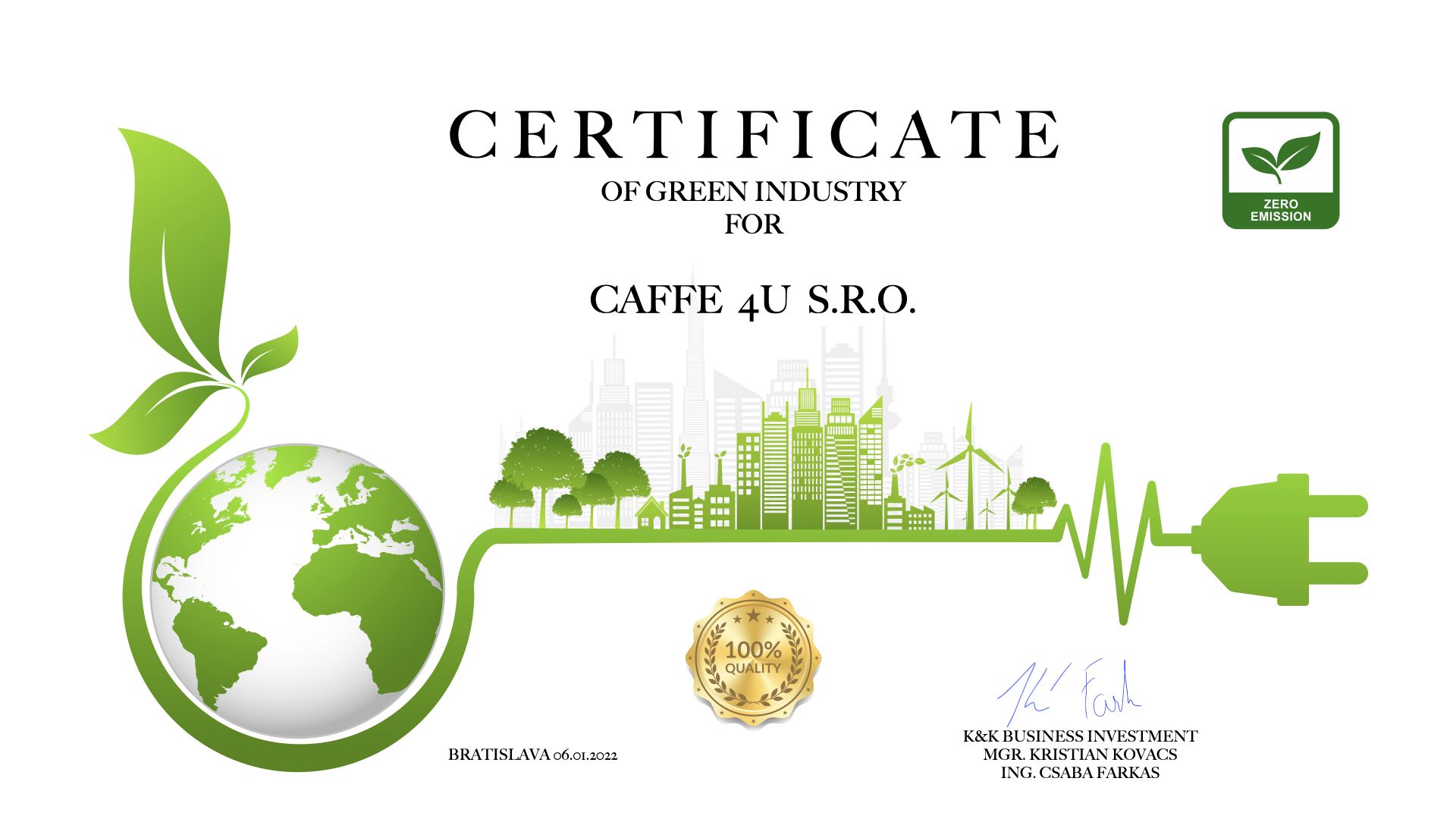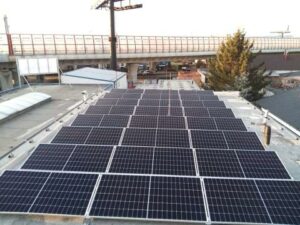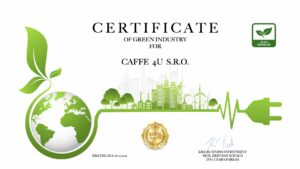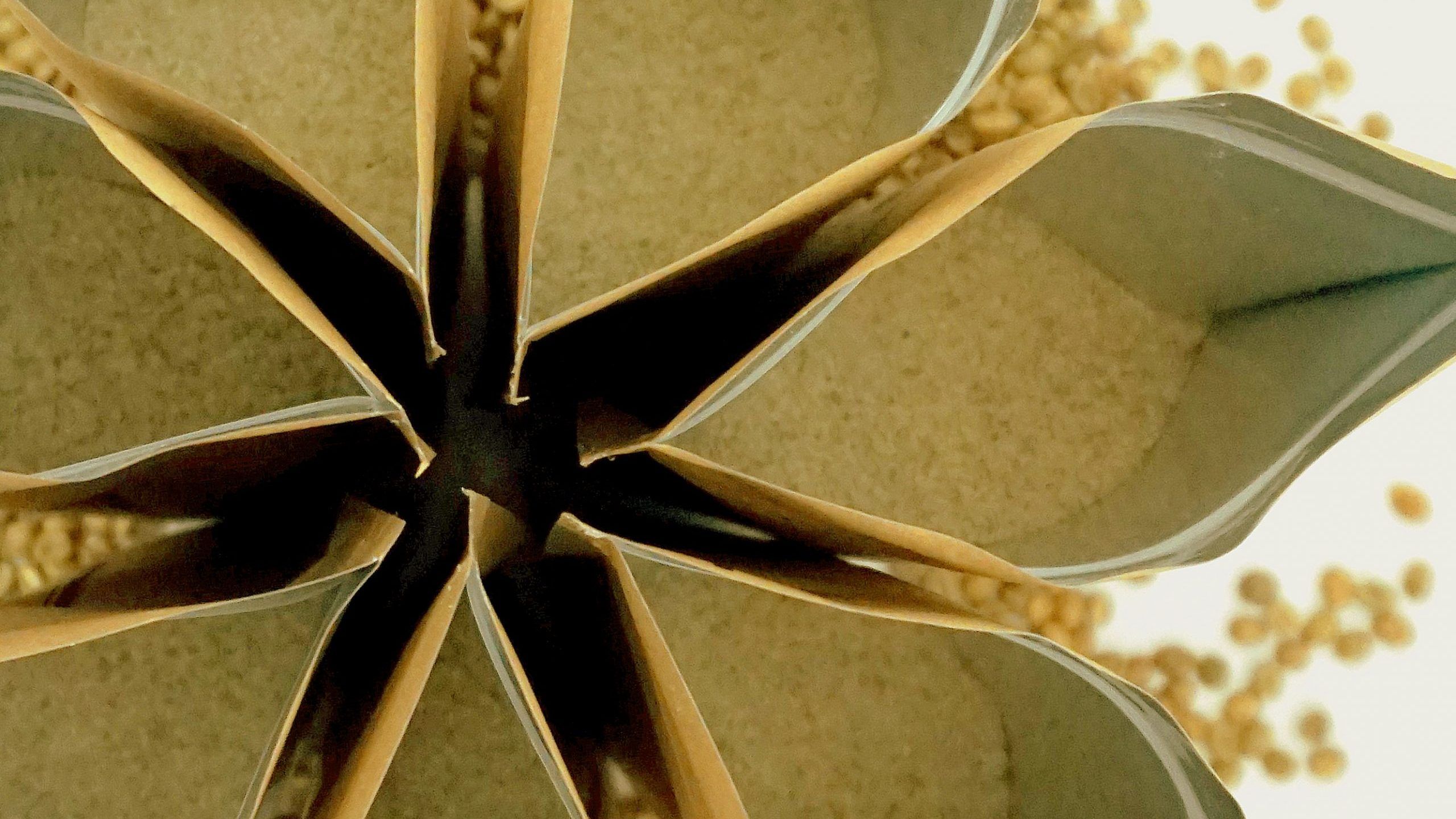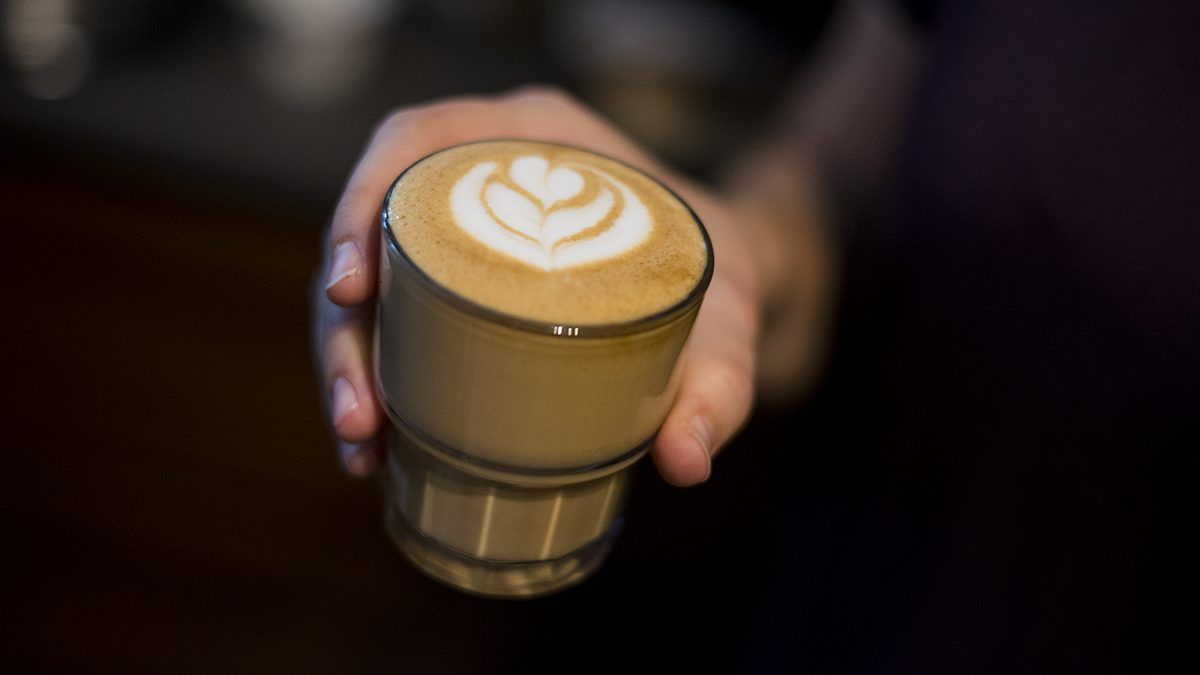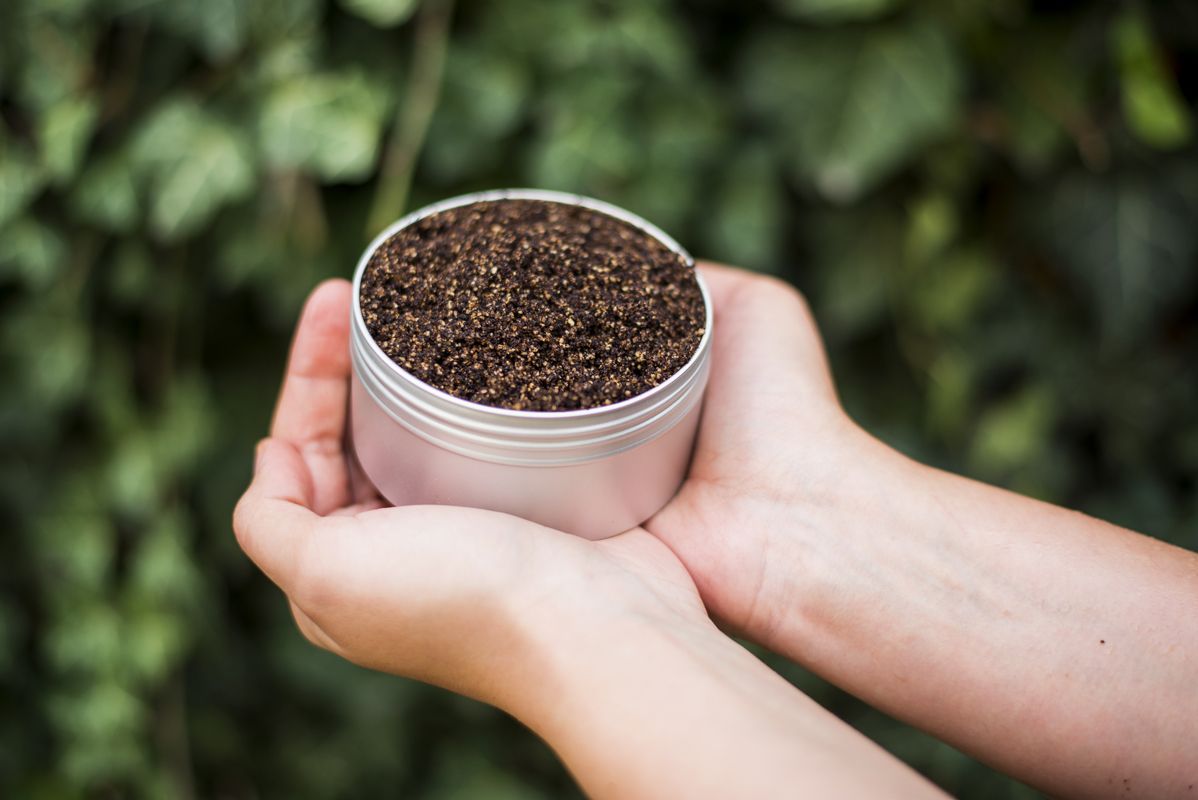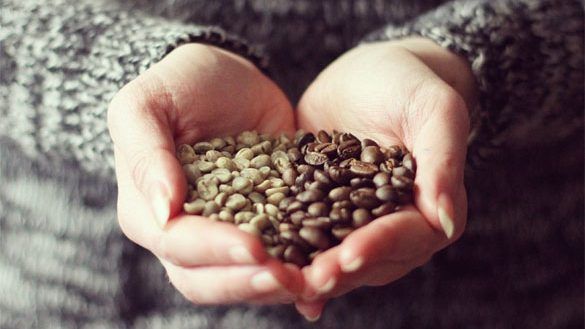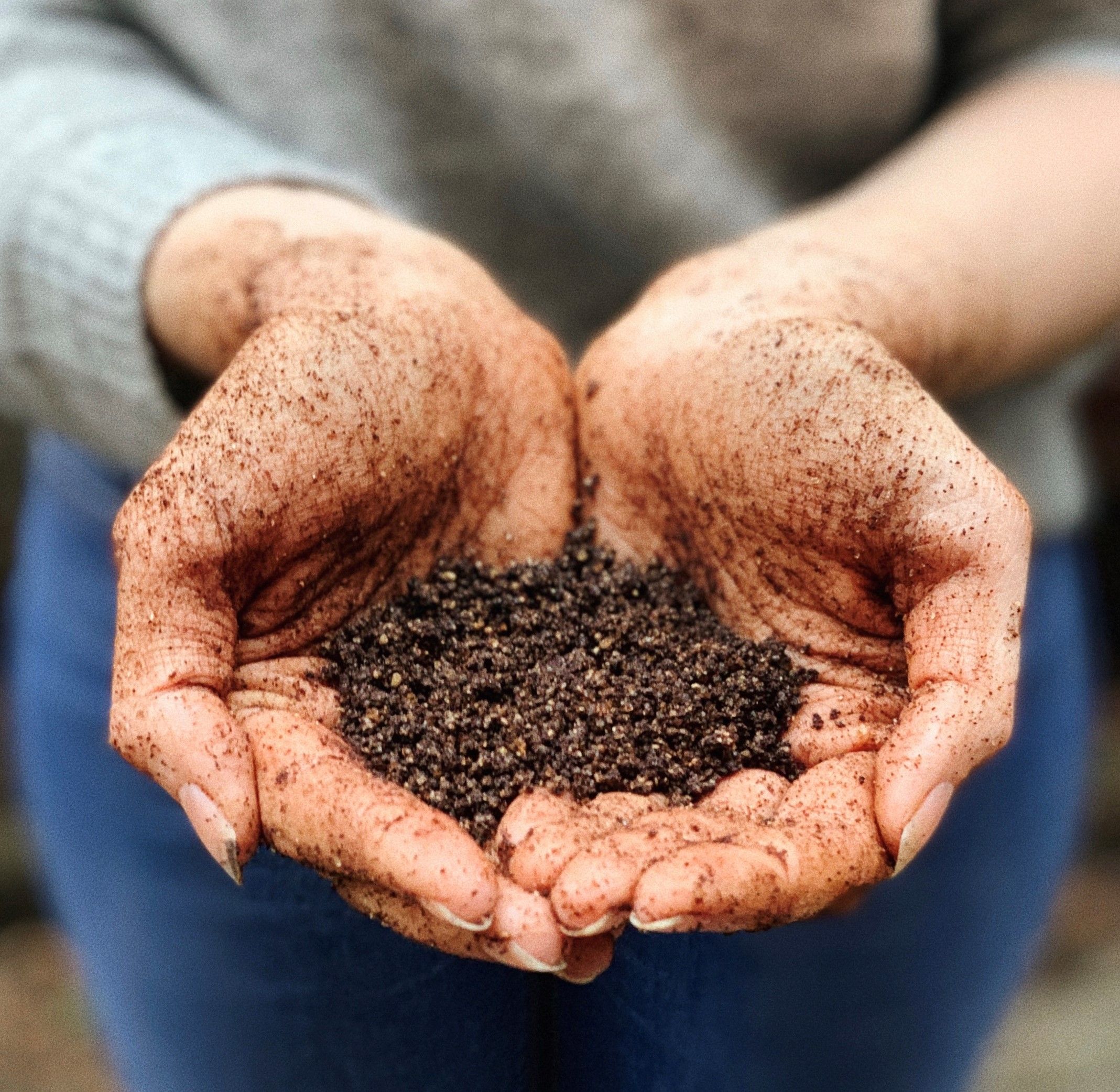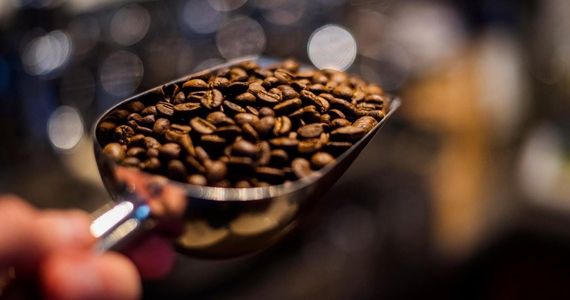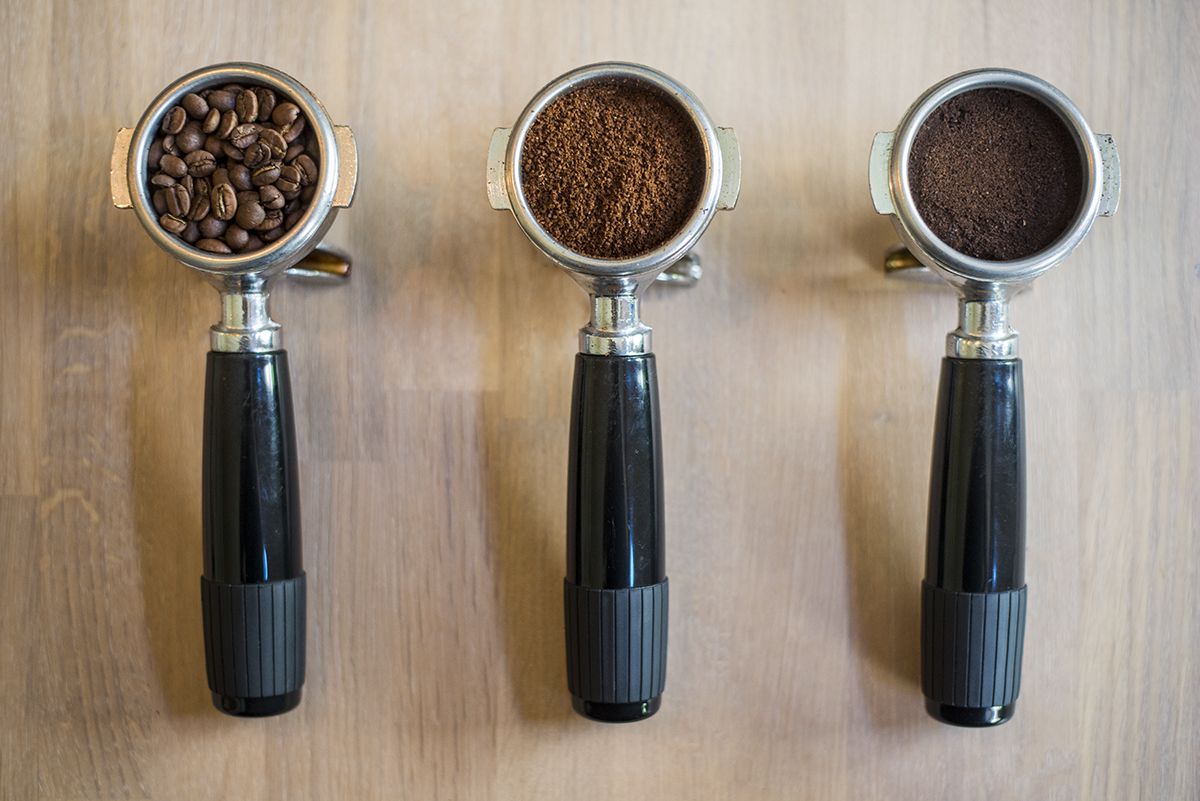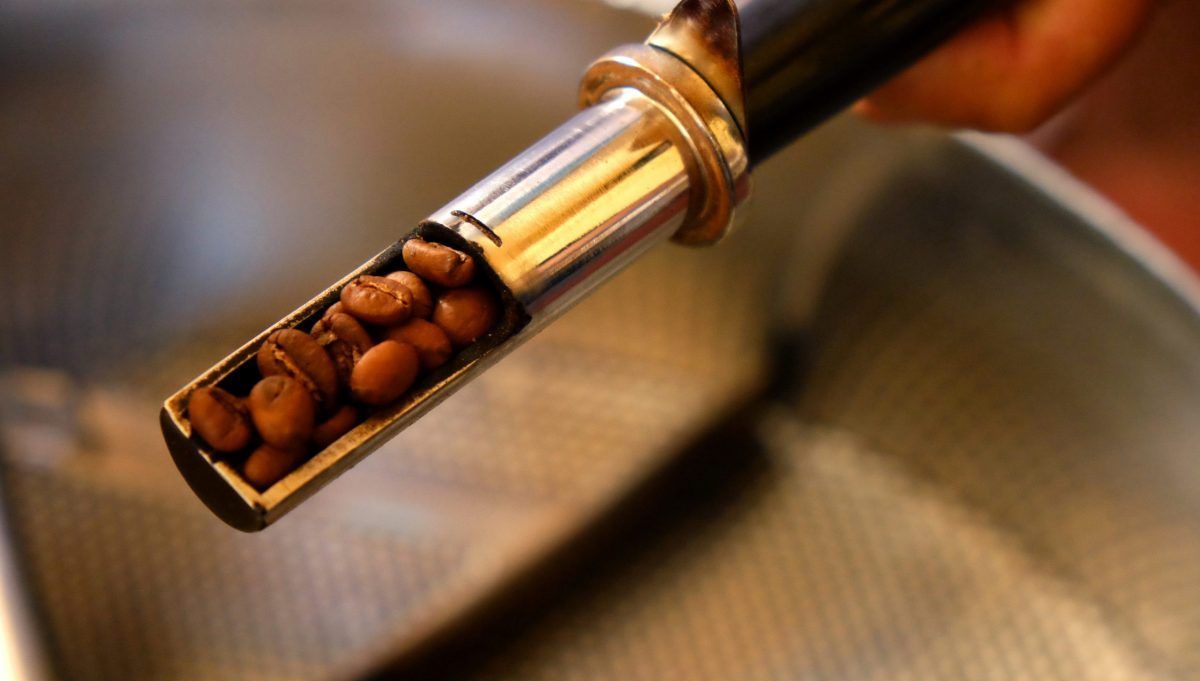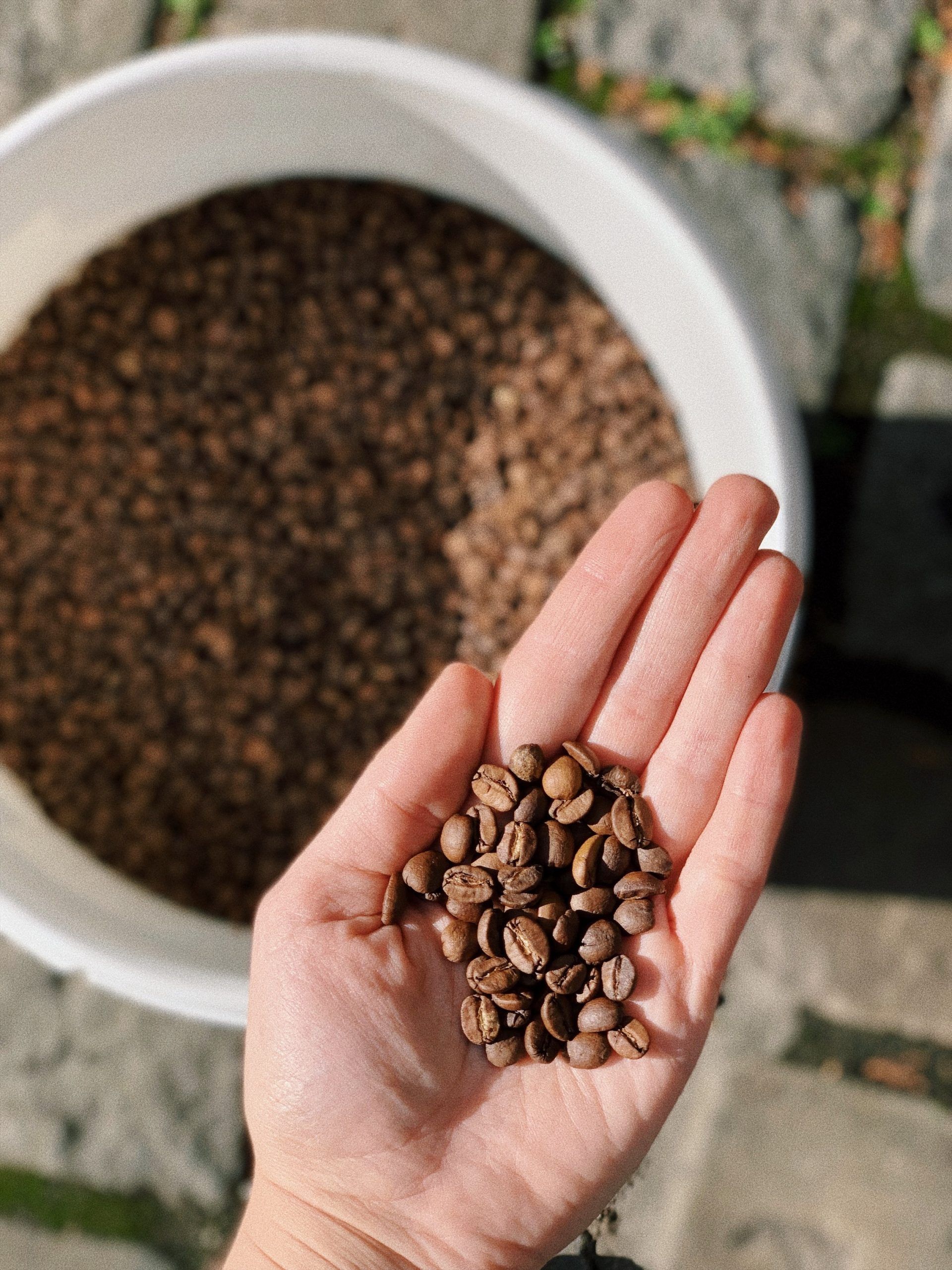Category: Magazine
Certified eco-roastery
The prefix “eco” has been very popular lately. Everyone wants to be eco-friendly, everyone loves organic and it’s best to trade fair-trade. That’s easy to declare. Many do so but often these are just claims.
However, the hardest thing to do is to do everything right even when no one is watching.
We have been pursuing sustainable philosophy from the very beginning. However, to start a functioning “green” business is not an easy thing to do. We manage to do it gradually. Using an electrical coffee roaster was our first step towards our green initiative and gradually we have taken more steps to be greener.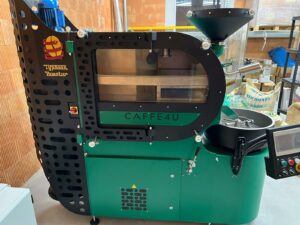
We have have always been satisfied with electrical coffee roaster. At the beginning we learn to operate it by trial and error and sometimes it took us days to reach the desired parameters and taste profiles. Coffee roasting is a science, you know. The important thing though is that we didn’t give up and as a result we’ve been roasting coffee for you for almost 8 years now. Many of you say that our coffee just tastes different (and we are glad you still like it:)). We know that the roasting process contributes significantly to the final cup taste. Therefore, we will take this process to the new level around which we will build everything else.
After 6 months of intensive efforts, we are finally starting the first roasting attempts on our Typhoon roaster. Compared to our first roaster it can roast 6 times more coffee in only 2/3rds of time. As every other coffee roaster loves to play with his new “toy” we do too, but there is more to it.
We are very proud that our coffee roaster has a certificate of green industry. Not only the emissions from the roasting process are minimized, we also use renewable solar energy to power it. After having all the inputs and outputs evaluated, we have succeeded. We will soon be happy to welcome you in our new space, so that you will be able to see how a coffee roastery works. And especially what it looks like – with brand new solar panels on our roof!
We are even the first in Slovakia to have a CO2-neutral certificate! We grow and improve just because of your support for which we owe you a big THANK YOU <3
Let’s make our city naturally more beautiful together!
Dear coffee lover!
As you may have noticed, recently we’ve been taking more and more steps on our path to sustainability. It has become our number one priority. Ecological coffee roaster powered by solar energy, fully-recycable coffee packaging, wholesale in returnable aluminum containers for a discounted price, packing coffee into customers’ own bags and containers – these are some of the measures we’ve implemented so far.
Recently we joined the Capital city of Bratislava in their initiative called 10 000 trees. 
We are proud locals and we’d like to contribute actively to making our city beautiful and better city to live in for all of us. We believe that in order to see the change around you should start with yourself. So we donate 0,05€ from each sold package.
We would be very happy if yo decided to share these values with us and support this project with any amount.
Let’s make this city naturally more beautiful together!
Green coffee vs. weight loss
Did you know that…
… green coffee is not a special kind of coffee? All coffee beans are green when raw and unroasted. After the drying process and separation from the pulp, they are ready for further processing. To preserve their freshness, they are further distributed. Subsequently, they go through the roasting process into the form we know – aromatic dark brown grains.
However, unroasted coffee fruits have an undeniable advantage over the final product, which has gained them a lot of fans lately. They contain caffeine, lipids, amino acids, potassium, carbohydrates and antioxidants. These substances beneficial to the human body are lost during roasting. The research confirmed that when processing raw coffee beans at a temperature of 230 to 250 degrees Celsius for 12 to 21 minutes, the total antioxidant content was halved. Just one particular antioxidant, chlorogenic acid, has elevated green coffee to a healthy weight loss remedy.
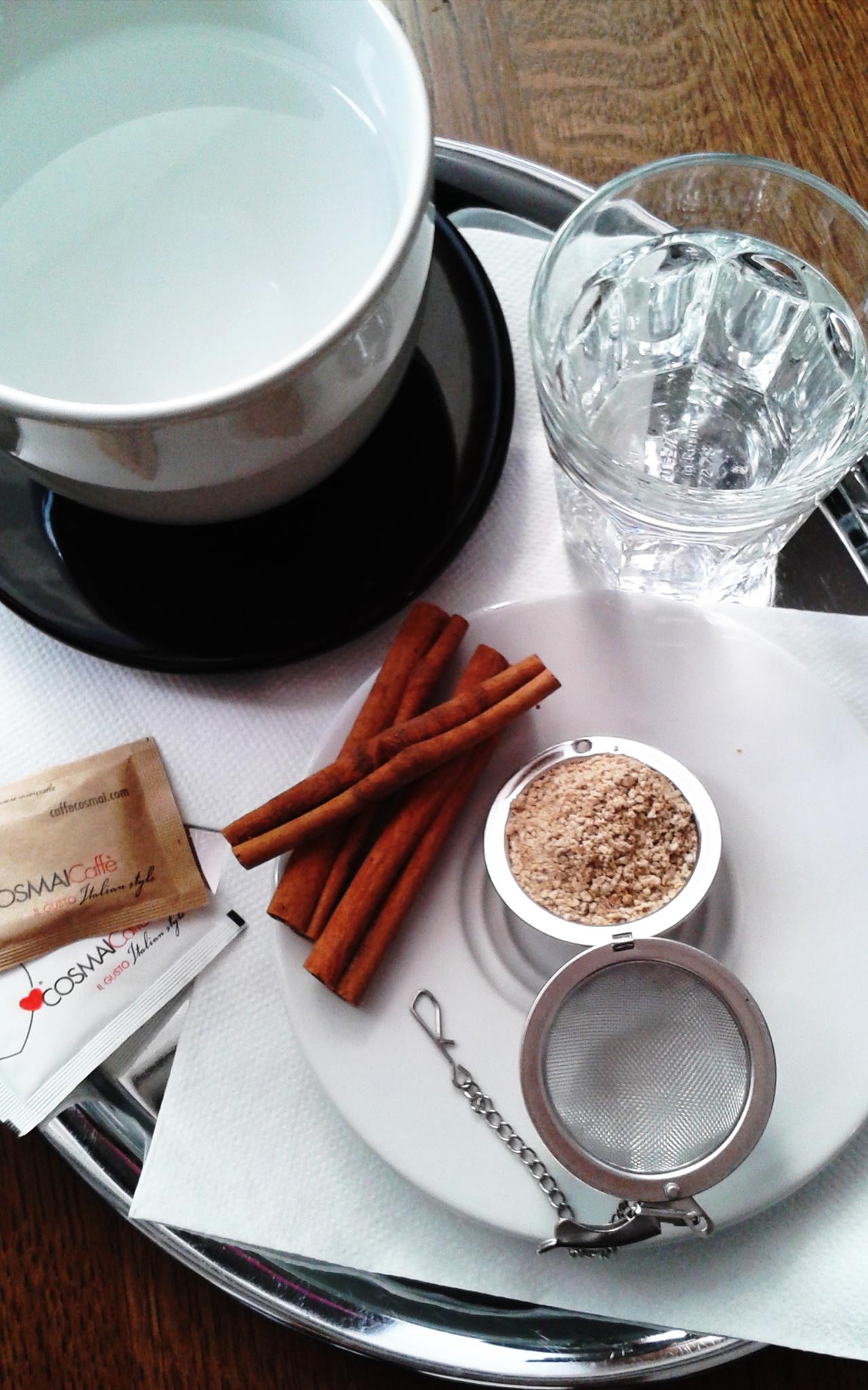 Chlorogenic acid primarily slows down the aging process of cells. It further lowers blood pressure and blood sugar levels due to the absorption of carbohydrates from the digestive tract. The study confirmed an association between chlorogenic acid and weight reduction. This acid has been shown to improve the function of the hormone adiponectin, which increases the oxidation of fatty acids and prevents the storage of fats in the body. By drinking this unusual beverage regularly, you can prevent the development of diabetes, reduce the risk of cardiovascular disease or cancer and last but not least, lose some extra pounds.
Chlorogenic acid primarily slows down the aging process of cells. It further lowers blood pressure and blood sugar levels due to the absorption of carbohydrates from the digestive tract. The study confirmed an association between chlorogenic acid and weight reduction. This acid has been shown to improve the function of the hormone adiponectin, which increases the oxidation of fatty acids and prevents the storage of fats in the body. By drinking this unusual beverage regularly, you can prevent the development of diabetes, reduce the risk of cardiovascular disease or cancer and last but not least, lose some extra pounds.
We must also not forget the caffeine content, which is the same in green coffee as in roasted coffee. Caffeine has stimulating effects on the central nervous system, which in most cases is associated with a reduction in fatigue. However, this stimulation also increases the rate of metabolism. Caffeine increases the so-called Rest Metabolic Rate by 3 to 11%. Peaceful metabolism is an indicator of how easily our body burns calories at rest. The higher the value, the higher the energy consumption and the more one can indulge in eating without fear of extra pounds. Therefore, with regular (but not exaggerated) drinking coffee, there is a greater chance of weight loss. Beware, however, with long-term consumption of any beverages containing caffeine, there is a risk that the body will develop resistance to its effects.
Our experience
During the whole period we have been working with green coffee, we have become one of the largest sellers. Thanks to this, we had the opportunity to collect information directly from our customers. We have met with various reactions, but especially the positive ones.
The most common reactions were:
- faster digestion
- weight loss
- pressure adjustment
- energy boost
- special taste
There were also people who prefer classic roasted coffee. In the end, everyone has different taste. And what do you like? Do you belong to the club of lovers of this healthy delicacy, or do you lean towards the good old classic roasted coffee?
Caffeine. A dangerous killer?
Caffeine is a substance that is found freely in nature in various plants, their leaves, flowers or fruits. When caffeine is mentioned, everyone is probably thinking of coffee immediately. And here comes the everlasting dilemma. Is caffeine dangerous, or is it just a myth?
Many studies show that caffeine has health benefits. It has a positive effect on the human body inside and out. The effects of caffeine have been known since ancient times. Its ability to affect the human body is amazing and is therefore used in many areas such as gastronomy, cosmetics, the pharmaceutical industry, etc.
But most often everyone sees caffeine in connection with coffee. This second best-selling commodity in the world is a rich source of antioxidants for the human body. The stimulating effects of coffee on the human body are well known and therefore many cannot imagine their morning routine without it. However, everything needs to be done in moderation. Excessive caffeine consumption can also cause side effects such as anxiety, sleep disturbances, palpitations and restlessness.
According to the American National Coffee Association (NCA), a regular cup of (dripped) coffee contains approximately 65-120 mg of caffeine. However, the amount of caffeine in the cup cannot be generalized, it is influenced by several factors that we must take into account when preparing coffee:
- Coffee bean type – Arabica coffee beans are known to contain less caffeine than robusta beans.
- Roasting – lighter roasted coffee has a higher caffeine content than darker roasted coffee.
- Type of coffee – the caffeine content can vary significantly between filtered coffee, espresso, instant coffee and decaffeinated coffee. Filtered coffee usually contains more caffeine than espresso.
- Serving size – “one cup of coffee” can range from 15 to 300 ml, which also affects the total caffeine content.
- Brewing time – the longer the water flows through the ground coffee, the more caffeine is released
- Although the name can be misleading, decaffeinated coffee is not completely decaffeinated, on average it contains about 3mg of caffeine.
The daily dose of caffeine should not exceed 200-300 mg, which corresponds to approximately 5-6 properly prepared espressos from the Arabica variety.
Caffeine has also found great use in the cosmetics industry. How to keep your skin tout as long as possible? How to slow down aging?
Cosmetic companies have begun to add coffee and coffee berry extracts – caffeine – to many of their products. Studies whose results have been published in the Journal of Investigative Dermatology, show that caffeine breaks down UV-infected cells without damaging healthy cells. Due to its anti-inflammatory and stimulating properties, it has a positive effect on the skin and penetrates through it into the body.
Coffee peeling is currently experiencing a big boom. This cosmetic product is a mixture of roasted and green coffee in combination with various oils. And the effects?
- helps remove dead skin
- has an anti-inflammatory effect
- thanks to the caffeine content, which strengthens the skin, it can help reduce cellulite
- antioxidants prevent the formation of wrinkles and prevent premature skin aging
- relieves eye swelling, can help reduce circles under the eyes
- contributes to the overall regeneration of the skin
To sum it up, there is a difference between taking caffeine through coffee and the difference between applying a caffeine-containing cosmetic product to the body. While the caffeine contained in coffee gets directly into the body, which we apply through the cream, brings benefits only locally.
Every human body is different and reacts individually, so only yourself can find out, how beneficial is caffeine for your body
Organic coffee
The trend of enjoying quality coffee in the comfort of home has put coffee lovers in front of a difficult decision. How to choose the variety, the degree of roasting or the thickness of grinding? With growing concern about the environment and overall quality of life, another question is crawling into our minds: regular or organic coffee?
Coffee is the second most traded commodity in the world after oil. In 2014, the world consumption was estimated at 149.3 million bags of coffee, which is almost nine billion kilograms of coffee. To meet mass demand, production was maximized to such an extent that coffee cultivation began to harm the environment. Therefore, the question of choosing between regular and organic coffee is very relevant in the current situation.
Many synthetic fertilizers, pesticides, herbicides, fungicides and insecticides are used in the cultivation of coffee, as well as in the cultivation of other crops. Growers and coffee collectors are thus exposed to these harmful substances, which can cause various health complications and serious diseases. These chemicals continue to enter the water and air. Thus, another vulnerable group is people living near coffee plantations, who are directly threatened by the surrounding chemicals.
The plantations themselves are also a problem. They were mostly preceded by deforestation, so that hybrid varieties of coffee could ripen in direct sunlight. There is a risk of landslides during heavy rains in the tropics. Erosion is usually caused by the grubbing-up of the forest stand, the root system of which ensured the stability of the soil. In addition, during rains, chemicals are washed out of the soil and there is a risk of contamination of drinking water sources, animal death and human health complications.
What makes organic coffee growing better for the environment? The product is only labeled as organic when grown on soil that has not been chemically treated for at least three years. This time period is required for the soil to be cleaned of all chemicals. Organic farming uses natural fertilizers – coffee husks, chicken manure or compost. These types of fertilizers do not have a negative impact on the environment, whether it is the quality of the soil, water, air or the lives of its inhabitants.
Most of the production of organic coffee is grown in the shade of the forest. There is no need to artificially create plantations when the forest provides everything needed for growing coffee. Coffee trees naturally prefer shade. Birds and reptiles, which lose their natural habitat during deforestation, are very useful in growing coffee. These animals feed on insects parasitizing on coffee trees. Conventional coffee cultivation uses unnecessarily large amounts of pesticides and insecticides, as the absence of birds and reptiles causes pests to multiply in the area.
Growing organic coffee is beneficial for both the ecosystem and the end consumer. This is not a new trend, as all products have been organically grown in the past. Thus we can say, organic production is successfully verified over the time.
The world of caramel scent
Arabic wine. That’s what Europeans used to call coffee in the past. Today, many know it only as dark, chocolate-brown grains stored in various containers.
Coffee represents the beginning of every day for many people around the world. It is a ritual that creates peace and boosts energy for the rest of the day. But coffee it’s not just a drink. It is an event that we try to make as pleasant as possible.
We at CAFFE4U have been creating your more peaceful days for over six years. We try to create the ideal environment, where you can fully enjoy your cup of coffee. We achieve that through an offer of more than 30 types of coffee. Therefore, it does not matter if you are looking for coffee with tones of hot chocolate, citrus or fruit. We want everyone to find their favourite with us. We use coffee of the highest quality, which comes from almost all over the world. Our greatest pleasure will be when you start discovering this coffee world full of possibilities with us.
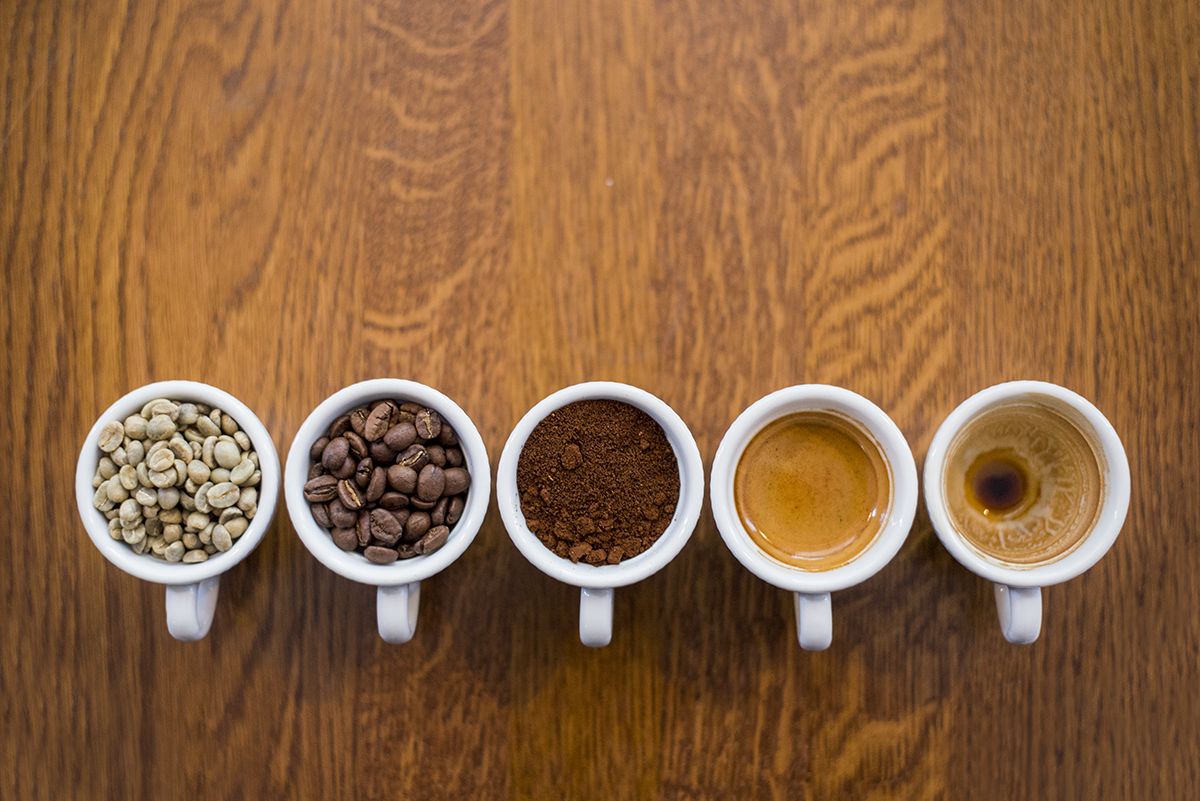 Just as grapes used for wine have many varieties, so does the coffee trees. They grow in about 70 countries around the world with suitable climatic conditions. These areas are referred to as the “coffee belt” and are found between the Tropic of Cancer and the Tropic of Capricorn.
Just as grapes used for wine have many varieties, so does the coffee trees. They grow in about 70 countries around the world with suitable climatic conditions. These areas are referred to as the “coffee belt” and are found between the Tropic of Cancer and the Tropic of Capricorn.
The whole process of coffee beans treatment is fascinating. Before coffee can land in a cup, it has to go a long way, which starts with a coffee tree. The farmer on his plantation takes care of that. Thanks to his many years of experience, he knows when is the best time to collect. Coffee cherries are harvested in a more complex (manual) way, or in a less expensive way, also called unsorted harvesting.
The green beans that the farmer obtains from coffee cherries, which we, the roasters, are interested in, are processed by the three most common methods, which have a significant effect on the overall taste of coffee. The farmer decides whether he wants to process the grains by the wet, dry or honey method. The wet method gives the coffee chocolate and nut tones. Dry (natural, dry) processing will highlight especially fruity and more acidic tastes, and finally the honey method emphasizes sweeter tones and thanks to it, coffee also acquires a consistent body. In addition to these known methods, there are many variants with small differences in the processing. However, they are very easy to recognize in taste. Such methods belong to a common group called experimental.
Roasters then turn the green beans into tasty, roasted beans suitable for making coffee. We offer mainly coffee beans called Coffea Arabica.
If you’ve ever walked through Obchodná street in Bratislava, you may have smelled a delicate, caramel scent that easily overwhelms the senses. Most likely we just roasted one of our coffees. Roasting is the alpha and omega of its final taste. It is due to different roasting that its assorted tastes are created. We are a local roastery that focuses mainly on roasting with the designation City + and Full City, which means darker roasting used mainly for espresso. Over time, however, we have expanded our offer to include light-roasted species, which are principally suitable for preparation using alternative methods, such as V60, Chemex, Vacuum Pot, Nitro Brew, Cold Brew, frenchpress or mocha.
Do you want to travel the coffee world with us without leaving the house? You can read all about our coffee offer in our e-shop. You choose your favourite according to the tones that you prefer in your coffee. Whether you like spicy India Mysore or caramel Salvador, every coffee is prepared for you fresh and with care.
Get to know (almost) the whole coffee world with us and discover new tastes
Roasting coffee step by step
Roasting coffee is an art and a science at the same time. It is a complex process in which coffee beans change from green to pale or dark brown. Roasting is what influences the taste of coffee the most.
Green grains have no properties of roasted grains. They are hard, tasteless and have a grassy scent. Roasting turns them brown, crunchy with a typical aroma and taste, as we see them most often – ready to grind and make coffee.
During roasting, chemical and physical changes take place inside the grains, thanks to which they gradually transform. Most of the moisture evaporates from the grains, they increase their volume, their density decreases and thus they lose weight. Coffee beans lose 12-25% of their weight during roasting. The sugars present in the green grains caramelize under the influence of heat, which, in addition to the high temperature, also contributes to the colour change. When roasting, two types of “cracking” can be heard: first as the water escapes of the grains, when caramelization begins. In the second cracking – carbon dioxide gets out. The cracking is very loud, it can be compared to the popping of popcorn. The green grains gradually pass through the yellow, pale brown to dark brown colour, depending on the degree of roasting. As the coffee is roasted to a darker colour, oils are being formed in the beans and come to the surface.
Once the optimum properties have been reached, the coffee must be drained from the roaster and cooled immediately, otherwise the roasting process would continue, which could reduce the quality of the coffee and change its final taste.
Light roast is suitable for alternative preparations, it emphasizes the natural fruity character of the coffee, acidity, floral tones and aroma.
In medium roast, the characteristics supported by roasting are being amplified, the natural properties of the coffee begin to be lost and a balance between acidity and the body of the coffee is created.
The darker the roast, the more the acidity disappears and the easier is to feel the specific roasting profile rather than the characteristic tones of the individual coffee.
Many people wrongly believe that the darker the roasted coffee, the stronger it is in terms of caffeine content. However, the longer the grains are roasted, the lower is the caffeine content. We roast our coffees light (especially suitable for making filtered coffee) or dark (for making espresso).
Home roasting
Many coffee enthusiasts get used to roast coffee at home. There are several ways to do this, for example on a special perforated pan, in a popcorn maker, or on a classic pan. These methods are cheap, but often at the expense of coffee quality. It is difficult to achieve equal roasting of all grains and the problem is mainly with their cooling. In case you would still decide to try roasting at home, we offer excellent green coffee beans of assorted varieties.
